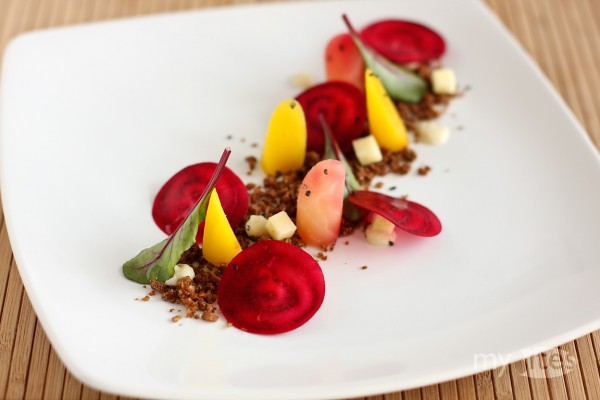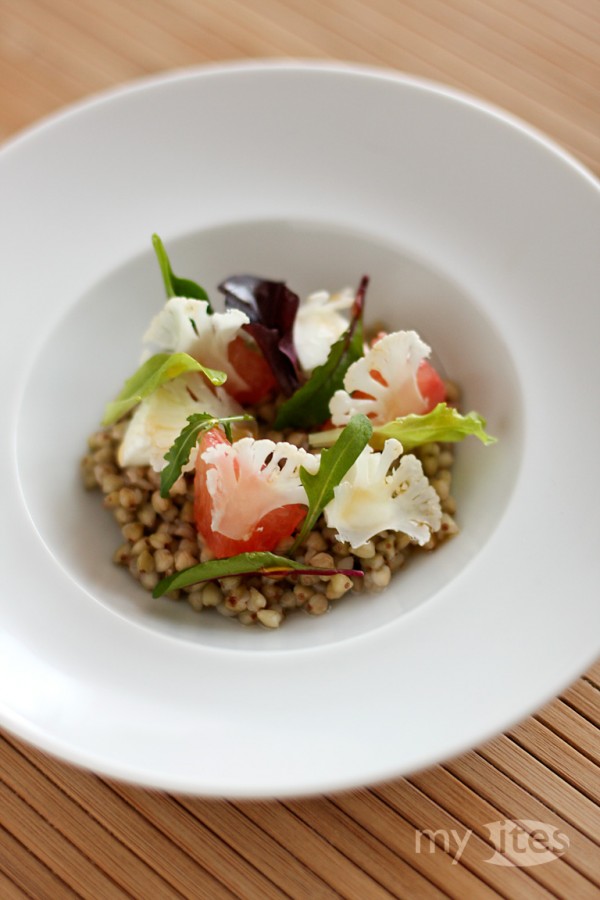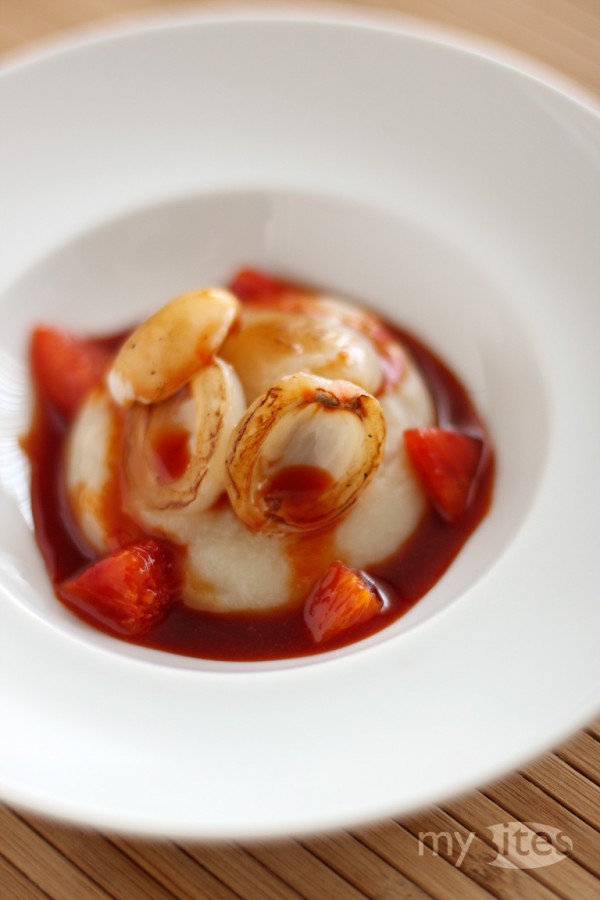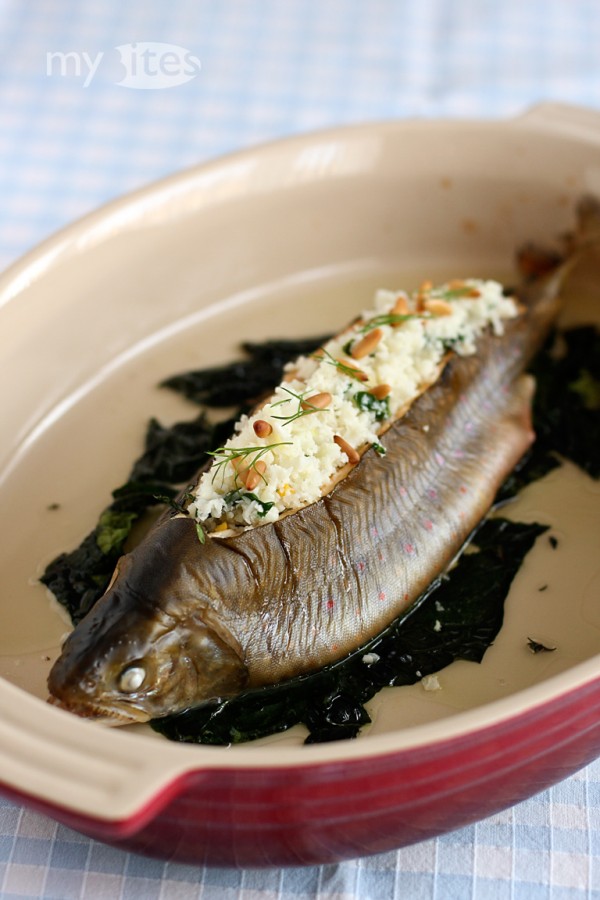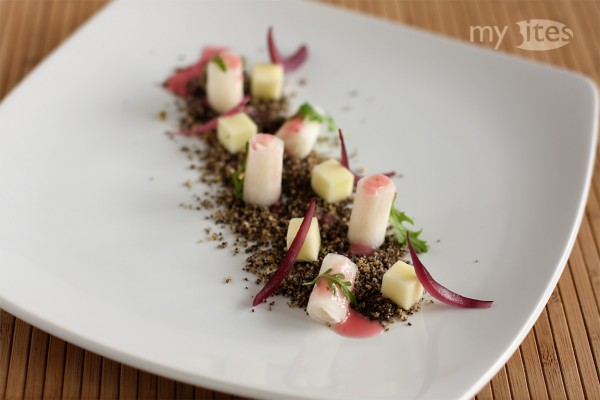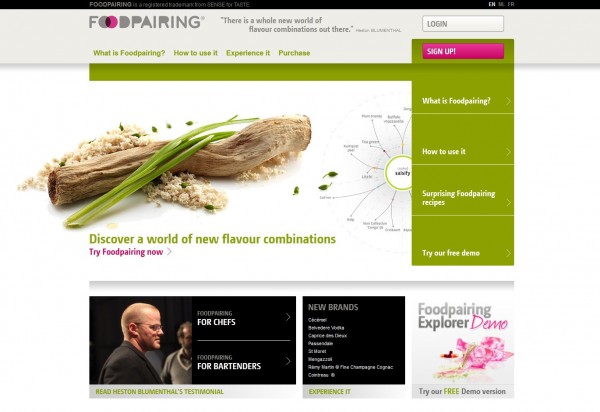It was a long and winding road until the golden beetroot finally made it to my kitchen. I first encountered yellow beets on a photo in the German food magazine Der Feinschmecker. Later on, in 2009 I got my hands on a copy of Heston Blumenthal’s Fat Duck Cookbook. It included a very simple yet funny recipe featuring orange and beetroot jelly only (see a photo here). The joke in this dish was that the flavors are swapped: the red jelly is made of blood orange juice and the yellow one using golden beets. I appreciate culinary surprises like this, because the twist and the surprise naturally forces the diner to focus more on the flavor. Among other things, this was also a reason why I began to look for golden beets. Unfortunately, the search took me 3 years, but I finally received 3 exemplars.
Buckwheat with Mozzarella, Grapefruit and Raw Cauliflower
Recently, I’ve been using the Foodpairing Explorer even more than usual. I created many interesting combinations, but with most of them I’m still thinking about the optimal ratios, preparations and presentations. The ingredient combination for this fast and simple vegetarian dish is based on a combo list too, which I linked together recently on Foodpairing.
Roasted Litchi with Salsify Puree and Blood Orange Sauce
How would you describe the texture of fresh litchis? It’s probably closest to some traditional grape varieties, but this association might come from its very sweet taste as well. Considering the texture only, to my opinion litchis resemble prawns or scallops. Based on this line of thought, I replaced the prawns to litchis in a simple recipe I developed 2 years ago.
Char with Cauliflower Couscous
Have you ever wondered why fish in Germany – and almost everywhere in Europe – is gutted with a cut at its belly? It’s straightforward to some extent, because all innards are located in the belly, and by removing them along with the gills, the fish can be kept refrigerated 3-4 days longer. In China I noticed that fish are usually kept alive in restaurants and killed to order. An even more interesting experience was to see that all fish was cut open and gutted from its back, so the bellies of the fish were always completely intact. I liked this back filleting method simply because the possibilities of stuffing and serving a whole fish. Unfortunately, at the local market in Erlangen they don’t sell any fish alive and all of them are already gutted via a cut along their bellies. So my filleting from the back basically resulted in two fillets held together by the head and the tail of the fish, but made the seasoning of the whole fish a lot simpler and more precise.
Camomile Turnip on Poppy Seed Soil
In my previous post I gave a short review of the renewed Foodpairing website. In a short tutorial I went through all options of the Foodpairing Explorer and simultaneously created a combination of ingredients featuring poppy seeds, banana, turnip, apple and camomile. First this combination might sound a little bit weird, but if you take a closer look, they actually make sense together. Poppy seeds aren’t very sweet but slightly bitter on their own. Banana used as chips are less flavorful and less sweet compared to the raw fresh fruit and it contributes a nice crunchy texture too. Apples can be tart, turnips are actually very sweet and while they are both crisp, their consistencies differ. So to sum up, every main flavor and many different textures are present in the aforementioned combination, which is the foundation of creating an interesting vegan dish based on them.
Foodpairing – A Review
Foodpairing has been one of my major sources for inspiration in the last few years. In contrast to my other most favorite reference – the Flavor Bible, which lists compatible ingredients based on past menues and recommendations of chefs – Foodpairing extracts pairings based on the chemical flavor components of foods and drinks. The more similar the chemical composition of two ingredients, the more likely they can be combined in a dish as well. Probably one of the most well known weird combinations based on chemical compounds is caviar with white chocolate by Heston Blumenthal. Though, now with the help of the renewed Foodpairing website the possibilities for novel flavor pairings are limitless.
